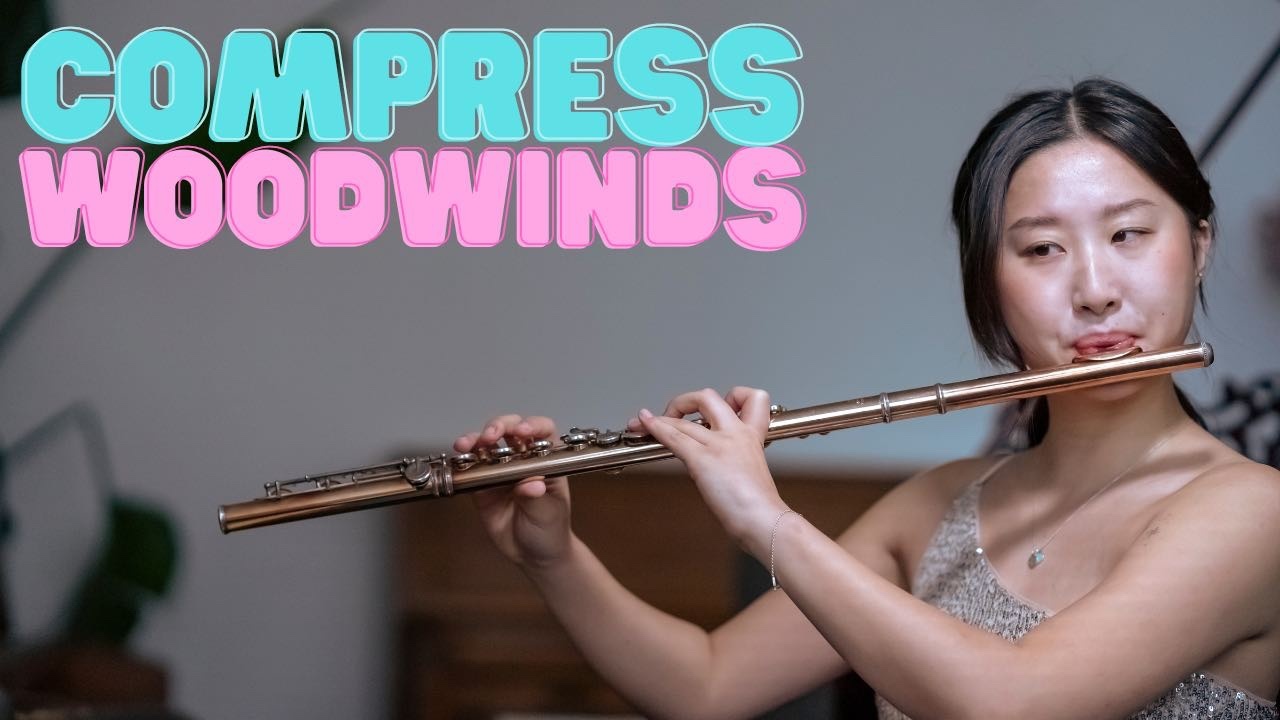How to Compress Woodwinds

From gentle flutes to roaring saxophones, woodwinds present a host of challenges when it comes to mixing. In this article you'll learn the best compression settings for all the major types of woodwind instruments so that your mixes will sound dynamic and professional!
If you want to improve the sound of your woodwinds even further, be sure to check out this guide on How to EQ Woodwinds.
Note: This article may contain affiliate links, meaning I would receive a commission - at no cost to you - for any products you purchase.
Challenges of Compressing Woodwinds
Compressing woodwinds can be challenging, as they are a lot like the human voice. They often have to retain enough dynamics to sound natural, though not have too much dynamics to where they pop out of the mix.
I often approach certain woodwinds differently than others, as some woodwind instruments require a much more delicate approach.
Regardless of the woodwind I’m working with, however, I try not to do more than 3 to 5dB of compression to keep things sounding as natural as possible.
Sax Compressor Settings
Saxophone is one of those instruments that often needs dynamic consistency, especially if it’s used in a pop song. You can be a bit more heavy-handed with sax compression than other woodwind instruments.
I often like to start by loading up a FET compressor like the 1176, using a medium attack and a fast release. You can shoot for anywhere between 5 to 7dB of gain reduction without stripping away the nuances of the sound.
In many ways, the saxophone is most similar to the human voice, so approach compression the same way you would with a vocal in your song and you should be on the right track!
Flute Compressor Settings
Flute requires far more care than saxophone, depending on the mix. Of course, we’re beginning to hear flute samples a lot in hip-hop and pop tracks these days, which are typically mangled, distorted, and sampled, giving them an over-compressed, otherworldly sound.
But for non-hip hop uses, if you want to retain the natural dynamics of your flute while providing a slight bit of control, we recommend utilizing a compressor with a low 2:1 or 3:1 ratio and around 3-5dB of compression on the loudest parts.
Be very subtle with your compression, as it can change the character of the instrument if you aren’t careful.
Woodwind Section Compressor Settings
Compressing woodwinds requires a lot of care as well. If you’re working in a classical setting, you’re much better off riding the faders to control the dynamics of your sound. However, if you absolutely need compression, whether it’s for the sound or a bit of glue, I highly recommend using an optical compressor with a slow attack and release.
At most, I like to go for around 3dB of compression and use my fader to ride anything that goes above my desired loudness threshold.
Learn more about Mixing with Compression
This is only one part of mixing with compression! Luckily, I've put together a bunch more articles to help you master this crucial mixing skill!
- How to Use a Compressor: Learn to Mix with Compression Quickly!
- Sidechain Compression Explained for Beginners & Key Settings
- 3 Tips for Using a Sidechain Compressor to Add Punch & Clarity
- Multi-band Compression Tutorial for Great Vocals, Drums & More!
- How to Use Mid-Side Compression for Amazing Recordings!
- How to Use Parallel Compression for Powerfully Punchy Mixes
- Should You Compress Reverb? The Real Answer Finally Revealed.
- The 5 Types of Compressors (And Exactly When To Use Each)
- 10 Vocal Compression Mixing Tips (Including Best Settings)
- 9 Powerful Drum Compression Techniques for Punchy Pro Mixes
- Loud, Punchy Kick Drums with these Compression Settings
- How to Compress Snare - Use *These* Settings Punchy Snares
- Exactly How to Compress Bass for Tight Low End Thump!
- How Compress Acoustic Guitar Perfectly, Every time
- How to Compress Synthesizers: Best Compressor Settings for Synths
- How to Compress Organ: 4 Steps to a Great Mix!
- How to Compress Percussion: Compression Settings for Everything
- How to Compress Strings: 8 Magic Settings You Need to Know
From a Frustrated Producer in a Ragtag Bedroom Studio to Major Placements on TV Earning $1,000s!
My name is Evan, and I've been making music since around 3rd grade. I'm from San Diego, California, but I've lived in Washington, DC for the last 20 years.
While I still have a full-time day job, I have created systems that have allowed me to produce dozens of songs a year in my spare time.
My songs have been on Netflix, TV shows like the 90 Day Fiance, an award-winning indie film, and NPR’s “All Thing Considered.” They've also been streamed millions of times.
In addition to being a music producer, I am passionate about teaching people how they can make professional-sounding music and earn money licensing it, all in their spare time.
Thousands of musicians, like yourself, have trusted me to guide their musical journey. My YouTube videos have been watched nearly a million times. And my story has been in Forbes, Side Hustle Nation, and the Side Hustle School.





